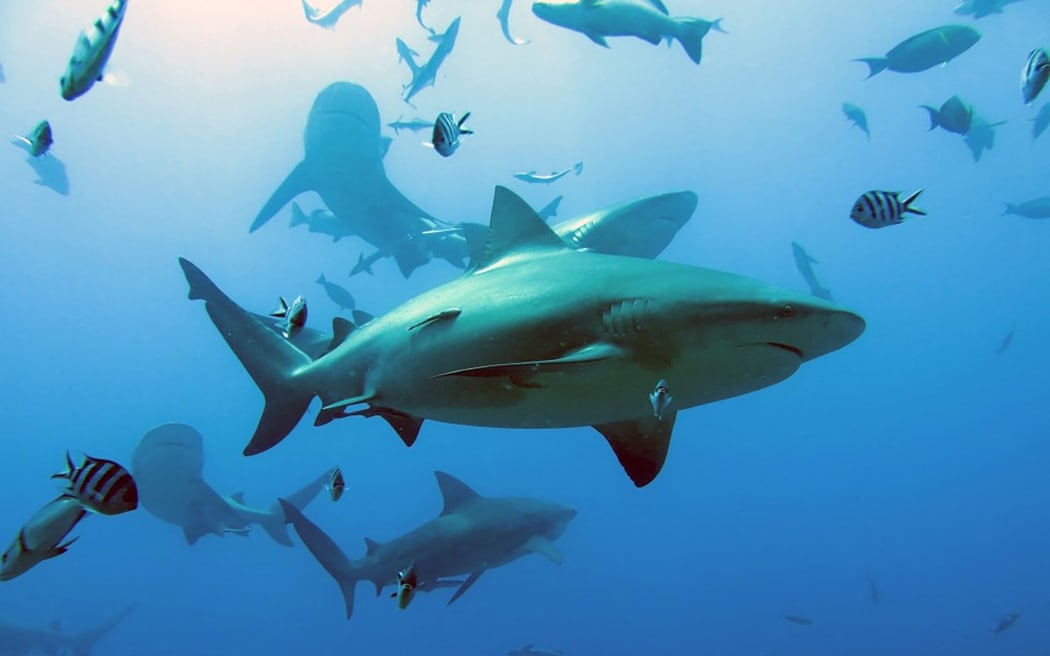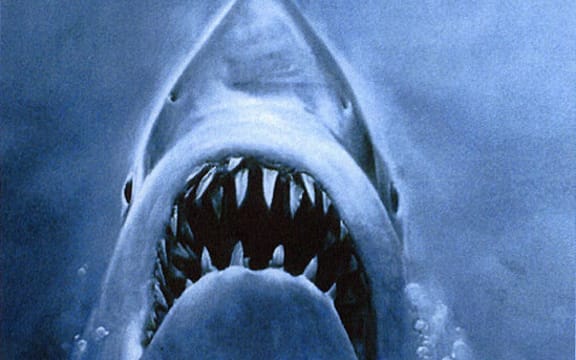
UN approves landmark ocean treaty. Photo: AFP / Colin Simpfendoreer/Simon Fraser University/James Cook University
Humans pose more risk to sharks than sharks do to humans, one of Aotearoa’s leading shark experts says.
Andrew Stewart, curator of natural history at Te Papa Tongarewa, has dedicated his life to learning about and protecting sharks and other sea life.
“Sharks are fishes and I've just had an absolute fascination with fishes since I was about three or four,” he says. “I just took it from there, really.”
Stewart is the co-author of landmark encyclopedia The Fishes of New Zealand. Most recently he's been involved in a new kids' book, Mangō: Sharks and Rays of Aotearoa, with Ned Barraud.
“With this book, Ned and I are both hoping that we can get a new generation of children to think differently about these apex predators, because they are so very important to a healthy sea.”
He tells Afternoons that while the only way to truly avoid a shark in New Zealand waters is to choose a swimming pool instead of the sea, sharks aren’t out to get us.
“Sharks aren’t out there looking around for the next leg to chew on.
“They might chew on you, then think, ‘mmm, this was the wrong bit of food, yuck’.
“But they're not out there gunning for us, which sadly is not true the other way. We kill thousands and thousands of sharks every day, accidentally as by-catch and sometimes, deliberately targeted for meat and fins. And if we remove too many of these from the ecosystem, then we can expect the ecosystem to collapse.”

Andrew Stewart: "Dog attacks are more responsible for more deaths around the world than shark attacks." Photo: Norm Heke
Stewart says shark attacks are extremely rare; in his hundreds, if not thousands of work-related and recreational dives around New Zealand, he’s only had two “negative relationships” with sharks.
“You’re much more likely to be injured or killed in the car driving to or from the beach than you are going to be injured or killed by a shark. I mean, dog attacks are responsible for more deaths around the world than shark attacks.”
The average size of a shark is around about under a metre, Stewart says.
“They come in all shapes and sizes. Some are speed kings, others are just set up to swim slowly using minimal energy and creating minimal disturbances.
“Not all sharks are these great big power machines that barrel through the water at a great number of kilometres per hour. Most people when they think of a shark like that it'll be a mako or a Great White, or a bronze whaler… one of these ones that is an open ocean pelagic species. They have got powerful tails, their fins are designed to enable lift so they're not sinking, they can turn quickly.
“There are some species of shark and you look at them and you go, ‘can you swim at all?’. Little bramble sharks and the prickly dog fish… that’s triangular in cross section. If you catch one, you could sit it on the deck and it doesn't fall over. And it's just a blob with a square tail and the great big high sail fin and the most ridiculous little head and mouth. They just hop along the seabed, yet they seem to be able to get up and around.”
New Zealand waters are home to three of the ‘big four’: the Great White, tiger and the Oceanic White. Stewart says “the most dangerous shark of them all – the bull shark” – isn’t found here.
Stewart says he’s heard of an increased sighting of whale sharks around northern New Zealand, where they are a popular attraction for divers.
“Tourists just love diving with them because these massive fish just sort of hang there and are awe-inspiring when you see them in the water.”
Whale sharks are the biggest fish in the world – Stewart says this “gentle giant” is a plankton eater.
“The very biggest sharks are the ones that eat the very smallest things.”

The cover of 1974 novel Jaws, by Peter Benchley. Photo: Wikimedia Commons
People were afraid of sharks before Steven Spielberg's 1975 film Jaws, but the movie and its haunting soundtrack helped bring that fear into focus, Stewart says.
“I know Peter Benchley, who wrote the book, regretted writing the book afterwards. He said it became the excuse for wholesale and unwanted slaughter of these animals out of unjustified fear, really.”
For all their power and strength, sharks are actually quite delicate animals, Stewart says.
“They don't survive often being caught in a trawl. And if they are held or immobilised in any way on a long line, they can often get into a sort of stress situation and die.”
He says a lot of fishermen have told him that if they catch a shark, they’ll let the shark swim off.
“Which I think is a fantastic attitude. Whereas in the past maybe they would have put it on board and killed it.”
Mangō: Sharks and Rays of Aotearoa, by Ned Barraud and Andrew Stewart, published by Te Papa Press, is out now.

